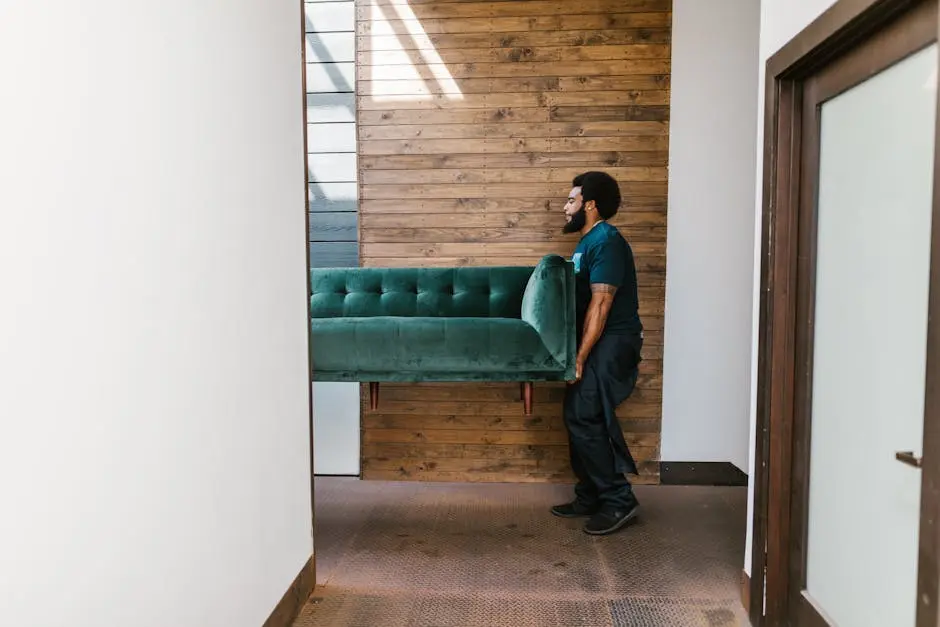Moving large furniture in a small car might very well seem like an impossible task, but with a bit of creativity and strategy, you can definitely make it work. Whether you’re moving into a new apartment or just bringing home a new piece from the store, here are our tips on how you can transport large furniture efficiently without having to call in a moving truck.
1. Measure and Assess
Your first and possibly most crucial step before attempting to fit large furniture into a small car, is to measure both the furniture and your car’s space. Understanding the dimensions will help you determine if the furniture can fit and if it needs to be disassembled. We recommend taking note of the car’s interior layout, trunk space, and door width to plan the best approach.
Consider the shape and angles involved when planning your move. Not every furniture piece is just a rectangle or square, many have odd angles and projections, making it essential to know how they will navigate through car doors and in the interior layout. Also, think about how the vehicle handles extra weight; ensure it’s within the limit for a balance that won’t compromise safety during driving.
2. Disassemble Where Possible
To make large furniture more manageable and easier to transport, disassemble it when possible. Removing any detachable parts such as legs, cushions, or shelves will help make it easier to fit in your car. Make sure to keep all screws and small parts in labeled bags, so reassembly is straightforward once you reach your destination (we’ve all made this mistake too many times).
Even the bulkiest furniture can become surprisingly compact with a few strategic disassemblies. For example, if you’re moving a bed, detaching the headboard, footboard, and any frame components can save immense space.
Always pay special attention when it comes to handling any electronic elements. Unplug and securely wrap cords and any electronics like lighting fixtures. We recommend storing them separately to avoid tangling and breakage. This is often overlooked, and can risks damaging other parts or get damaged themselves during transit.
3. Utilizing Car Space Efficiently
Next, you’ll want to think about how you can maximize your car’s space (ie: by folding down seats and being strategic about placement). Arrange larger pieces first and fill in gaps with smaller items. This helps balance the load and prevents items from shifting during transport.
You can also leverage other compartments or less obvious spaces in the car, like footwells. These can be a great spot for flatter items or stowed-away cushions that won’t interfere with driving. We’ve seen success by using pillows and blankets as fillers between hard furniture pieces to minimize bumps in the road from causing the large furniture to move around, potentially causing undesired scratches or other damage to the car.
4. Safeguarding Your Furniture and Car
If possible (and depending on what you’re moving), securing everything with bungee cords or straps is another great way to keep your piece of furniture safe during transit.
We also find it super useful to have stretch wrap or bubble wrap handy. They add an extra layer of protection to sensitive surfaces like lacquered wood or glass. Not only does the wrapping protect from physical contact damage, but it can also help weatherproof against potential rain or moisture if your move happens during unexpected showers and you have an exposed truck bed.
Tips for Loading and Unloading
Finally, loading and unloading can be the trickiest part of moving large furniture. It’s always helpful to enlist a friend’s help if possible. You can work together to distribute the weight and carefully guide pieces in and out of the vehicle. Always take your time to avoid damaging the furniture, your car, or yourself.
Final Thoughts on Small Car Moving Success
Moving large furniture with a small car doesn’t have to be a daunting task. By measuring, disassembling, and following simple transportation tips, you can easily manage and safely carry your furniture to your desired location. Embrace the challenge with these tips in mind, and you’ll be amazed at how much you can achieve.
FAQs
1. Can I fit a couch in a hatchback or SUV?
Maybe! If it’s a loveseat or sectional piece, and you can remove the legs, it might work. Measure carefully.
2. Is it legal to drive with a mattress sticking out of my trunk?
It depends on your province or city. In general, overhanging items must be clearly marked and securely tied down.
3. What tools do I need to disassemble furniture?
A basic screwdriver set, Allen keys, adjustable wrench, and possibly a rubber mallet should do the trick.
4. Can I tie furniture to the roof of my car?
Only if you have proper roof racks or crossbars, and use strong tie-downs. Never tie directly to windows or door frames.
5. Is it worth it to hire movers just for one item?
Yes, especially if the item is expensive, fragile, or impossible to move safely on your own. Some companies offer single-item delivery services.








